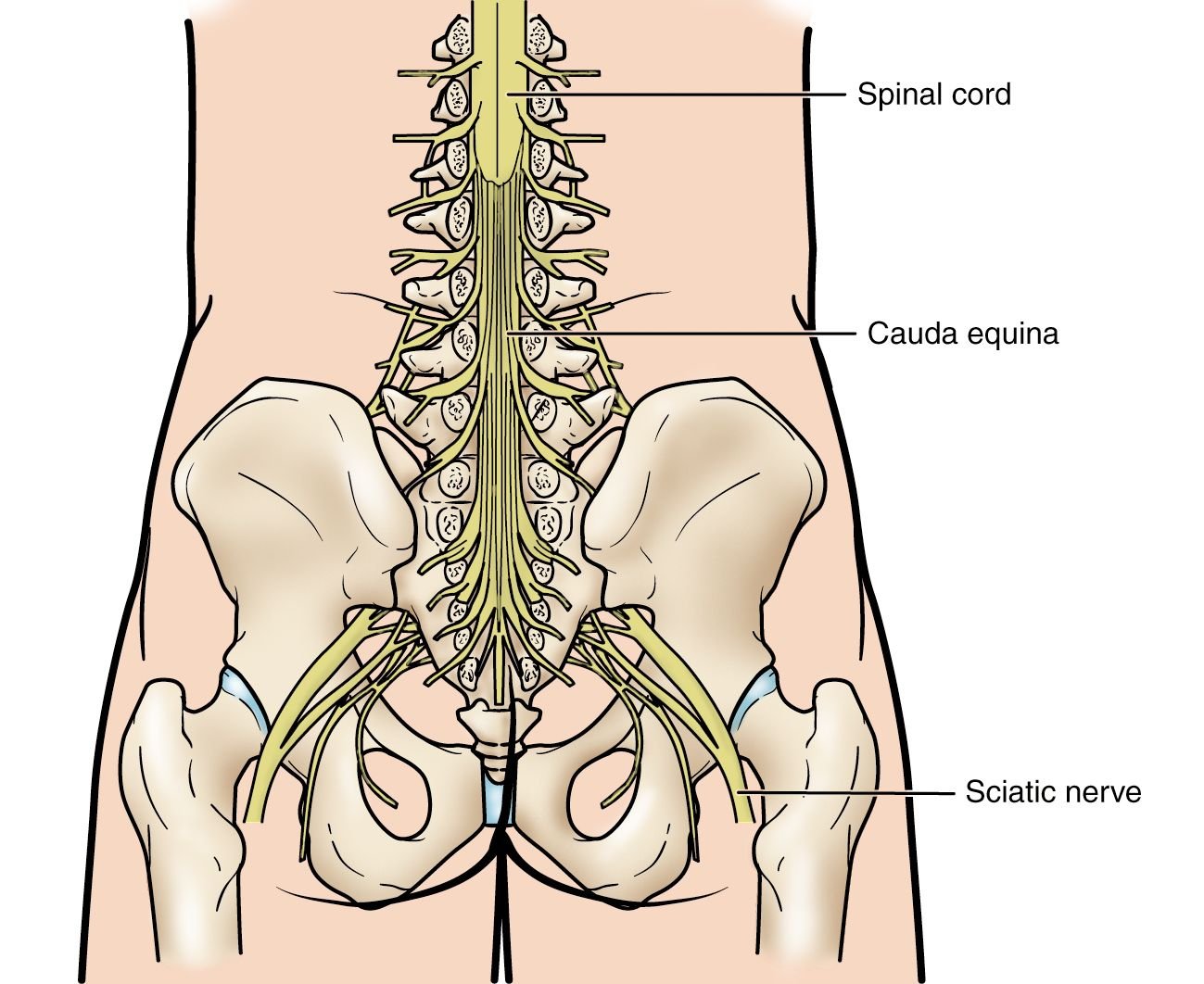Lajpat Nagar Metro Station, Block M, New Delhi, 110024
|096506 82102

Cauda Equina Syndrome : An Overview
Cauda Equina Syndrome is a rare but serious condition that occurs when the
bundle of nerves at the end of the spinal cord (the cauda equina) is compressed. This
can result in loss of function in the lower limbs and bowel or bladder control.
Our specialists at Spine Doctor Delhi are equipped with advanced
diagnostic and treatment modalities to address this condition promptly. Early diagnosis
and intervention are crucial to prevent permanent neurological damage.
When Do You Need Medical Attention for Cauda Equina Syndrome?
At Spine Clinic, Delhi, our primary treatment modalities include pain medication and physiotherapy post-diagnosis. However, urgent medical intervention is necessary for Cauda Equina Syndrome when the following symptoms are present:
- 1. Foot drop or weakness in the legs
- 2. Bowel or bladder disturbance
- 3. Severe lower back pain
- 4. Numbness or weakness in the lower extremities
- 5. Saddle anesthesia (loss of sensation in the areas that would sit on a saddle)
- 6. Lack of improvement or progression of symptoms despite conservative therapy
→ Pre Surgical Carefor Cauda Equina Syndrome
→ What to Expect During Surgery
→ Guidelines For Post-Surgical Care
Although it is a minimally invasive surgery, an interlaminar discectomy requires adequate pre-operative measures to ensure your safety and the procedure's success.
- Consult your doctor for an overall health and fitness checkup prior to your surgery appointment.
- Inform your doctor of the medications you are following. Your doctor may advise you to refrain from taking blood thinners and other medicines before the surgery.
- Your specialist at Spine Clinic shall review your condition and discuss the details of surgery, including physiotherapy, medications, and other surgeries to remove diseased or fusion discs.
- Refrain from taking any food or drink after your dinner the night prior to the surgery day. (Typically after 10 pm).
- You will receive general anaesthesia to ensure the procedure is pain-free and convenient for you.
- Inclusive of the anaesthesia time (in and out), positioning time (in and out), skin preparation, and procedure, the entire surgery will take a few hours.
- Once the procedure is complete, your doctor will help you recover from the anaesthetic effect.
- You will be wheeled to the recovery room and kept under observation for an hour, after which you will be shifted to the ward.
- You might experience post-operative pain. Our doctors will prescribe adequate analgesics for that.
- Our goal is to mobilise you and get you back on your feet the same day. Our physiotherapy team shall give you all the guidance and encouragement you need.
- Any urinary catheters placed during the surgery (for some cases) will be removed once you are mobile.
- You may experience some stiffness or soreness in the operated site. You may also experience numbness in your legs. However, these side effects will gradually subside.
- Your post-operative hospital stay depends on your recovery process. However, most patients return home the following day.
- Our clinical team will dress your wound with a waterproof dressing and guide you on changing it every alternate day.
- Kindly schedule follow-up appointments after Week 1, Week 6, and six months after your surgery.
- Make things convenient for yourself at home. Keep your personal items and medications within reach to avoid straining your back.
- Maintain an organised atmosphere by removing any clutter or furniture that may cause unwanted accidents.
- Arrange for a family member or friend to provide post-surgical care after your return home.
Understanding Cauda Equina Syndrome Surgery
Unlike traditional procedures, this surgery is less invasive, typically using a 9mm
tube for access, compared to the 40-50 mm incision in conventional surgery. This
smaller incision results in less tissue damage and promotes a quicker recovery.
Generally, this surgery is safe and minimally invasive. However, as with any
surgery, there are potential risks such as:
- Infection
- Allergic reaction to anaesthesia
- Excessive bleeding
Generally, the procedure lasts sixty to ninety minutes, depending on the complexity
and number of levels involved. You will require two to four hours of post-surgical
recovery time before you can return home.
